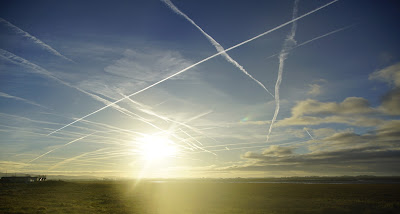They are trying to frighten us again.
“Arctic blast incoming! Britain faces a 383-mile blizzard as temperatures to plummet to -10C: Map reveals where 5cm of snow is set to fall with yellow warnings coming into force!”
Of course using the number 5 makes for more impact than telling us that 5cm is less than 2 inches, not enough snow to wet your toe caps. But never allow truth get in the way of a good click-bait headline.
It’s no surprise that hardly anyone buys newspapers nowadays, instead preferring to find alternative news and current affairs outlets on the Internet where an enquiring mind can delve into a wide spectrum of views and opinions rather than to read constant lies and propaganda.
Rant over and excuse the pun but the headline cut no ice with me as I headed out on Sunday morning into the rising sun as a thin layer of ice swished from the windscreen.
A pair of Stonechats greeted me at Gulf Lane where three parked and icy cars told me that wild fowlers had set out very early towards the marsh. The female Stonechat was more accommodating than her pal who maintained a safer camera distance.
I headed down Moss Lane where I hoped there might be a few Fieldfares looking for the last of the now threadbare hawthorns. Yes, and even a few Blackbirds temporarily losing their shyness to grab a few juicy red ones.
Blackbird
Fieldfare
Constant traffic, including sizeable farm vehicles, made the birds flighty and skittish with 30 or forty chuckling Fieldfares flying off and then returning within minutes. The light was poor for pictures so I set off in search of other birds, promising to come back with sunshine.
Almost at the corner of Jeremy Lane a male Hen Harrier flew across in front of the car and carried on over the fields towards Glasson Dock/River Lune. It could end up almost anywhere, this one of two harriers, a male and a ringtail both seen with regularity and ranging across a large area for three or four weeks now.
According to our Government Ministers, Department for Environment, Food & Rural Affairs.
“Hen Harriers have enjoyed a better breeding season in 2023 whereby 141 chicks fledged successfully, the seventh successive year of population growth with 54 nests observed across the upland areas of England including County Durham, Cumbria, Lancashire and Northumberland."
Alternatively, a search on the Internet finds “Raptor Persecution” telling us that “2023 has been the worst year for the illegal killing of Hen Harriers on grouse moors since the ludicrous DEFRA / Natural England hen harrier meddling trial was given the green light in 2018”.
Dear Reader. DYOR - Do Your Own Research and make up your own mind.
I turned the car around around and tried again but the light was no better for Fieldfares hiding in the Hawthorns.
Further up the lane I found 40 or more Whooper Swans and several Bewick’s Swans. At Cockersands, 4 Cattle Egret, several Reed Buntings, 8 Goldfinches, 15 House Sparrows and a Barn Owl.
And yes, the sun came out again. Maybe next week too, despite the Arctic Blizzards set to engulf us.










_specimen,_Kelvingrove,_Glasgow_-_geograph.org.uk_-_1108249.jpg)
.jpg)



































